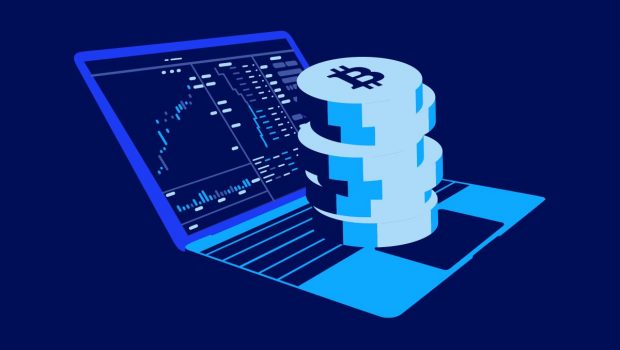Technology and Money: Understanding the Basics of Crypto Trading
For newer investors that are still learning the basics of cryptocurrency trading, it is important to focus on breaking down certain aspects of market analysis so that even beginners can understand how to get started. Whenever we start to learn about analyzing cryptocurrencies (or any other market investment), we can say that there are two central methods experts use to perform the analysis. Specifically, this refers to technical analysis and fundamental analysis.
Fundamental analysis methods are designed to assess the market value of a crypto asset using the underlying metrics and variables which evaluate whether or not the cryptocurrency is a great investment. On the other hand, technical analysis uses historical chart information to forecast future price movements in the value of a cryptocurrency. Here, Ask Traders will conduct an introductory crypto guide for those looking to enter the exciting world of cryptocurrency analysis.
Technical Analysis Basics
Technical analysis gives traders a methodology to evaluate investments like Bitcoin as it has made many upward moves this year. These practices involve statistical analysis of the activity in the crypto markets. Interestingly, technical analysis doesn’t attempt to measure the underlying value of a security. Rather, technical analysis will utilize price charts and other historical indicators as a way of finding patterns which can be used in developing investment decisions.
Technical analysis practices can be undertaken in a wide variety of ways. This can include assessing indicators and oscillators, viewing charting patterns, or using a hybrid performance of the two approaches. If we compare fundamental analysis to technical analysis, we can see that the main difference is the fact that TA practices implement the use of volume and crypto price data.
Technical analysis practitioners are concerned with the ways markets might behave in the future. Interestingly, the most effective predictor of future market movements is past price information.
Essentially, there are three different types of techniques/tools which can be used with technical analysis:
- Indicators & Oscillators
- Trend Lines
- Chart Patterns
The main overriding principles in the world of technical analysis maintain that the current price of a security already reflects all of the relevant market information related to that security. In other words, the statistical analysis of past price movements will allow traders to identify new trading positions in the future.
On the surface, these ideas might seem complicated. However, these are simply tools which allow us to see supply and demand in the market and then determine where the prices are likely headed.
Technical analysis approaches generally assume these factors:
- All relevant information is already contained in crypto prices
- Crypto prices move in trends
- Historical trends repeat themselves
Many successful crypto traders have dissected currency markets every imaginable angle. Crypto traders utilize a slew of data to make indicators outlining the market’s behavior in a way that’s easier to read and more understandable.
Cryptocurrency Indicators
One example of an excellent technical indicator is the Stochastic RSI, which synthesizes crypto chart information to give traders an idea of whether or not a price trend will be able to continue. Can a recent run in prices travel beyond what has been dictated in the prior existing trend? Or is a reversal more likely? With this information, the indicator can tell traders when a certain crypto trend has become “overbought” or “oversold.”
- Indicators: Technical tools that use mathematical equations based on crypto prices and market volume
- Oversold: Market condition showing that an asset is trading below intrinsic value (often due to market overreactions or panic selling). This can be a great time for crypto traders to buy (as the cryptocurrency is cheap relative to its intrinsic value).
- Overbought: Market condition showing that an asset is trading above intrinsic value (often due to market overreactions or news buying). This can be a great time for crypto traders to sell (as the cryptocurrency is at an expensive rate relative to its intrinsic value).
When crypto traders use technical indicators, it can become much easier to determine whether it might be a good idea to invest in a certain cryptocurrency. For instance, an indicator might be close to crypto signal prices are currently “overbought.” Here, educated crypto traders would interpret this event to means that the intrinsic value of the crypto asset has traveled far beyond market trend readings.
Thus, traders can avoid the chance that the market could readjust or make a correction in order to reach a point of equilibrium. Even with the strong price signal coming from the hypothetical scenario, a crypto trader may wish to analyze a number of additional indicators prior to any real-time trading decision to buy or sell.
Assessing the Crypto Environment
At this point, new crypto traders probably have a lot of important questions. This is perfectly natural, and it is an important part of the process whenever we are learning to use any new technological application. Of course, this usually seems overwhelming initially until new crypto traders get the answers to their most important questions.
Of course, there is no miracle crypto algorithm that will allow crypto traders to analyze a security perfectly (and without any flaws in the analysis). Certain individuals trading cryptocurrencies use the technology tools of technical analysts and still run into many roadblocks. This is also something that is perfectly natural. Will cryptos continue to travel upward or start to move down? There are strong possibilities (and related arguments) which can be established in both directions. Reading crypto signal app review can also be a great resource to get information on tools that are used to access the situation of the crypto market.
For crypto newcomers, it is critical to temper the hasty expectations because technical analysis is not the same thing as having a crystal ball. However, these are technology tools which can help crypto traders to determine the dominant direction that a cryptocurrency may take in the future.
It is often a good idea to use technical chart analysis as a guide to understanding key and important differences between certain cryptocurrencies (i.e. Bitcoin, Litecoin, Ripple, or Ethereum). No matter how much research a person does, it is always important to practice what is learned through this technology research. This approach tends to yield the best results over time.






![See the inside of a Phantom 4 drone [Infographic]](https://technofaq.org/wp-content/uploads/2018/03/infographic-drone-v3-with-glossary-final-v4-150x150.jpg)








